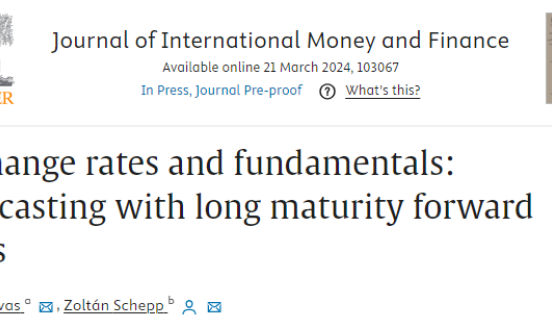What next for Europe's banking system?
Speech by Vice-President Valdis Dombrovskis at Bruegel on 15 November 2016
Ladies and gentlemen,
Today, I would like to set out my approach to regulating Europe's banking sector. Subdued global growth, Britain's referendum result and last week's American election – all mean I do so against a backdrop of increased uncertainty. This environment makes the need for predictable, level-headed policy more important than ever.
From a macroeconomic perspective, this means sticking to our plan: pursuing responsible fiscal policies while undertaking structural reforms to increase Europe's competitiveness, support investment and create jobs to reduce inequality. It sharpens our focus on making sure no one is left behind. In the area of financial services, it underscores the need for stability; for the certainty that businesses need to thrive; and for a framework in which a safe banking sector can play its full part in building a more prosperous Europe.
Banks have a fundamental role to play in our society. We depend on their lending for companies to invest, remain competitive and sell into bigger markets, and so that households can plan ahead. In practice, this means the European Commission is focused on maintaining a regulatory framework that encourages a banking sector that is stable, sustainable, diverse and integrated.
By stable, I mean a banking sector that is governed responsibly and has the capacity to withstand economic shocks without the financing of Europe's economy being jeopardised.
By sustainable, I mean banks that are able to earn fair returns on their investments, compete internationally and therefore maintain and expand lending to the wider economy.
By diverse, I mean a sector that is able to respond to a whole range of financing needs from small loans to family businesses, to hedging for multinational companies: banks of different sizes and with different business models.
And by integrated, I mean a sector that competes freely across the single market - supporting the efficient allocation of capital and diversifying risk. This is particularly important in the euro area for the smooth transmission of monetary policy.
But if this is our approach, if these are the objectives our framework needs to support, we should be clear on our banking sector's performance, and tackle head-on the significant challenges it still faces.
Recent reforms have made our banking sector more stable and resilient. Overall, the sector is much better capitalised, as has been shown by regular stress tests. Banks have raised more than 800 billion euros in capital since the financial crisis. The average capital ratio in 2015 for banks was 13.2%, 4 percentage points higher than in 2011.
Monetary policy has helped improve credit growth in Europe. In the euro area, the European Central Bank has provided abundant liquidity, including through long-term refinancing operations. It launched a large asset purchase programme and cut interests rates to record-low levels. Elsewhere in the EU, central banks are also pursuing accommodative monetary policies.
This is having an effect on the demand and supply of lending. Credit growth has been uneven, but overall, lending to non-financial companies in the EU has increased by 1.2% so far this year. Total lending by euro area banks grew by 1% in 2015. Banks have eased access to finance to the private sector. The cost of new corporate loans has fallen significantly in a number of countries – such as Portugal, Italy and Spain. As regards credit, we are starting to move in the right direction.
But Europe's weak recovery, low inflation and low interest rates are putting pressure on banks - particularly those reliant on net interest income. Analysts have forecast returns on equity to fall further over the next five years. This outlook weighs on banks' share prices and it decreases their return on capital.
This environment means banks across Europe are updating their business models. At the moment, it is clear that parts of our banking sector do not have the scale, or in some cases the expertise, to make the most of technological change. Digital payments and other innovations are developing rapidly. European banks will have to seize on digital innovations and work them into their business models.
The Commission is working to keep on top of digital transformation across all sectors. We want to foster innovation, give businesses the space to adapt and make the most of it. But we need to monitor changes closely to keep our existing rules fit for purpose. Yesterday, the Commission set up a Fintech Task Force to do just this. It will include experts on financial services regulation, but also specialists in technology, data, and competition policies.
Post-crisis challenges are also still being dealt with. In some countries, high levels of Non-Performing Loans (NPLs) and outstanding restructuring needs put narrowing bank profit margins under pressure. We have made great strides forward in setting up a Banking Union, but the regulatory framework for banks has yet to be fully implemented. A number of gaps need to be filled to mitigate systemic risk and encourage pan-European banking activities.
A strong banking sector in Europe is a diverse banking sector. We need small banks servicing local communities and businesses. And larger banks operating and lending right across the single market. If we are serious about wanting an integrated sector to absorb shocks and facilitate the transmission of monetary policy – we need a clear European framework.
In response to these very real challenges, some might be tempted to reverse the reforms we undertook during the crisis, to lower requirements, and give up on following international standards and the single rulebook.
But this would just create more uncertainty and instability. It would undermine a regulatory architecture that put banks back at the heart of our economy, trusted and relied upon by businesses and households alike.
My goal is to strengthen confidence and stability in the sector, by building on our new regulatory architecture to reduce risk and complete the Banking Union. At the same time, we need to adjust our framework where necessary. To make it more proportionate and growth friendly.
These twin priorities have underpinned our upcoming proposals to revise the Capital Requirements Regulation (CRR) and Directive (CRD). And they will also be our approach to the measures still being discussed internationally, currently not covered by our upcoming proposals.
For more resilient banks, and to enhance financial stability, we will integrate standards into European legislation recently agreed by the Basel Committee on Banking Supervision and the Financial Stability Board.
To make sure Europe fully tackles the risks linked to global and systemically important banks, we will propose they hold a minimum Total Loss-Absorbing Capacity (TLAC) so that they can absorb losses better, and we can be sure that even the most systemically important banks can if necessary be resolved. Europe has established a new banks resolution framework only a couple of years ago. This framework remains the right one to resolve ailing banks and limit the impact on financial stability and taxpayers. So we want to maintain this framework and incorporate the TLAC rule into the existing Minimum Requirement for own funds and Eligible Liabilities – MREL. We expect up to 13 banking groups would have to comply with the TLAC standard in the EU. Where other banks pose similar systemic risks, we expect resolution authorities to deal with this on a case by case basis under MREL.
We will introduce a binding leverage ratio of 3%. Cheap credit can give rise to excessive leverage building up in the financial system. Banks have learnt that lesson from the financial crisis. To avoid repeating past mistakes, we will add the leverage ratio alongside risk-based own funds requirement in the CRR. Put simply, this leverage ratio will act as a backstop to banks' internal model based capital requirements. We remain fully engaged in ongoing Basel committee discussion on the appropriate leverage ratio for GSIBs and make sure any agreement is applied in a way that works for Europe.
We will introduce a Net Stable Funding Ratio, or NSFR. This will require banks to finance their long-term loans with stable sources of funding. And strengthen banks ability to handle periods of market stress better – such as after the UK referendum or during the last Greek crisis. The NSFR aims to limit over-reliance on wholesale funding during times of ample market liquidity and encourage better assessment of liquidity risk across the board.
We also want to clarify how Pillar 2 capital requirements should be applied by national supervisors and increase transparency by introducing disclosure obligations in this area.
Banks operate in global markets. It makes sense to implement international standards to encourage a level playing field and sound regulation internationally. But we will also work to make sure all our regulation works for Europe, to prevent unintended interactions with existing rules and support banks' lending capacity to the European economy. With this in mind, the feedback from our Call for Evidence on financial services has helped shape the upcoming legislative proposals.
We will propose to introduce a ‘SME supporting factor' to all SME loans and to apply similar measures to infrastructure finance. We will propose bank capital charges for investments in infrastructure projects to be reduced, providing these comply with criteria which lower risk profiles and increase the predictability of cash flows.
Where we can, we will reduce the administrative burden linked to some rules in the area of remuneration. And, our proposals will strengthen the proportionality of banking prudential legislation and make changes to reduce reporting burdens. We would like to see lighter disclosure requirements for small credit institutions and simplify approaches for trading-related capital requirements.
Our revisions to the CRR and CRD will aim to help banks support deeper and more liquid capital markets in Europe. So our proposals will include specific adjustments to avoid disproportionate capital requirements for trading book positions, including market making activities. We will reduce costs for issuing and holding certain high quality financial instruments, such as covered bonds, high quality securitisation instruments, or derivatives for hedging purposes. And we will make sure we have the right incentives in place for institutions acting as intermediaries for trades cleared by Central Counterparties (CCPs).
Beyond our upcoming proposals, the completion of the Banking Union remains a priority. We need it for a coherent and predictable regulatory framework, but also to support integrated banking markets across the EU.
Risk sharing needs to go hand in hand with the risk reduction measures we are incorporating into our legislation. Our proposal for a European Deposit Insurance Scheme would reduce the vulnerability of national deposit guarantee schemes to large local shocks and weaken the link between banks and national governments. By mutualising national deposit guarantee schemes, our proposal would provide stronger cover for all retail depositors in the Banking Union, and ensure that depositor confidence in a bank would not depend on the bank's location. We are now counting on the co-legislators to take this forward. It is good news that Esther de Lange's draft report is now being discussed in the European Parliament.
We will continue to work closely with Member States to reduce high levels of non-performing loans. The European Commission is supporting policy responses by Member States through its Structural Reform Support Service established in July last year. We are already seeing keen interest from a number of Member States to work with us on this.
At the same time, we are conducting a review of loan enforcement regimes, to get a clearer picture of the impact on banks in terms of delays, costs and value-recovery. In the coming weeks, we will present a proposal for effective arrangements for restructuring viable business debt in the EU Member States giving companies a second chance.
Through the European Semester process, we have made Country Specific Recommendations to six Member States to address NPLs. And we are working with national authorities to find tailor-made solutions in the framework of the existing rules on bank resolution and state aid. As part of the mid-term review of the Capital Markets Union, the Commission will assess the case for the development of a secondary market for distressed debt.
Together, these priorities make up a balanced approach to the banking sector. To strengthen our regulatory framework and support financial stability. But also to support strong European banks. Banks that are safe, competitive internationally and responsible, with forward looking business models.
This approach lies behind the Banking Union proposals already on the table, and the proposals we will shortly make to revise the CRR and CRD legislation. It will also underpin our follow up to the Call for Evidence, our proposal on Central Counter Party Recovery and Resolution and the Review of the European Market Infrastructure Regulation. It is the ambitious approach I want to take forward, working closely with industry, consumer groups, the Member States and the European Parliament. And one I believe can make a real difference to supporting sustainable growth and jobs across the EU.



